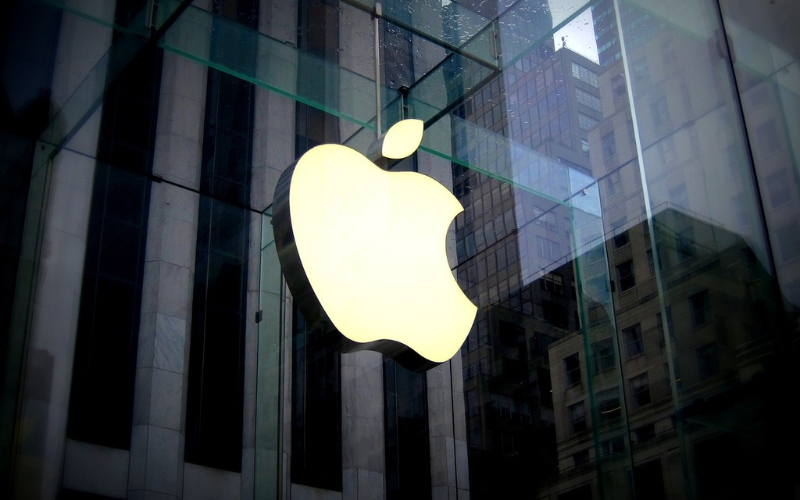
Global tech giant Apple commits to 100 per cent freshwater replenishment in high stress locations in which it operates, addressing high water usage in its supply chain, and certifying its data centres to the Alliance for Water Stewardship Standard.
Apple follows other tech giants, such as Microsoft and Google in developing a water strategy that focuses heavily on the principles of stewardship and reuse. Previously, water had sat under the resources pillar of the company’s environment strategy.
Its approach to water stewardship focuses on:
In developing a water strategy across all of its operations, the company states that it is “committed to improving the availability, quality, and equity of water access around our facilities and supplier locations globally”.

Apple makes clear that it wants to prioritise stewardship efforts because it sees water as a ‘community resource’. Its goal is to work toward “the most efficient use of freshwater, using alternatives where possible, and managing our discharge responsibly”. Its strategy will focus on areas of water stress, which it defines by understanding quality, availability, and equity.
As a community resource, water affects not only Apple’s own facilities but the water basins in which they operate. Like other tech giants, Apple’s strategy involves working with local stakeholders to improve water quality in those basins for the communities who rely on it.
To ensure maximum impact in these basins, the company has developed a water ‘footprint’ that is used to inform the ‘five pillars’ that underpin its water strategy.
Apple’s water strategy is based on five pillars that are informed by the company’s understanding of its water footprint:
Scott McCready, chief strategy officer, Alliance for Water Stewardship, writing on LinkedIn, said of the strategy: “This is their first public Water Strategy. I like it a lot. There's nothing in it that's like ‘OMG, you've reinvented the water stewardship game!’ Which is what I like about it. I think the actions that companies should take are not flash, but pretty straightforward, and pretty much the same for every company and every sector.”
He added: “As a sector tech is synonymous with innovation. This is innovative, but not in that 'move fast, break things' etc way. Its innovation is in its breadth. The comprehensiveness. The all bases are covered-ness.”

The five-pillar strategy has been designed to reflect the breadth and depth of activities across the company’s operations, which can vary by value chain segment. Across the direct operations and supply chain, the strategy is informed by mapping ‘water intensity against baseline water stress, our level of control or influence over the site, and whether water is used consumptively or not’.
In its strategy document, Apple gives the following example:
“Low-water design and replenishment are significant opportunities for our direct operations that use water consumptively and in diffuse locations. But those opportunities are less significant for our supply chain, given its scale and the level of control we have over supplier locations.
“By contrast, site efficiency and site water stewardship are more important for the supply chain because water is not used consumptively, and suppliers tend to be clustered in industrial parks within watersheds.”
Despite these different examples of how the strategy might be implemented, leadership and advocacy is expected to be shared across the value chain, where collaboration, experience and insights can help to ‘design new manufacturing processes, develop standards, promote water stewardship, and support innovation’.
The company has developed a water footprint to help it better understand the water basins in which it operates, the impact it has on water and the communities that rely on it, and also to help inform the five pillars of its overall strategy.
Developing a water footprint helped the company understand the impact of its water use across both its direct operations and also across its supply chain.
The company has used its experience of assessing its carbon footprint to develop a life cycle assessment (LCA) approach to understand the water consumption associated with materials, manufacturing processes, logistics, and use across the value chain. Where possible it uses primary data, such as metered water data from a corporate campus or water use surveys of our suppliers.
Its innovation is in its breadth. The comprehensiveness. The all bases are covered-ness.
Where no primary data exists the company relies on industry data sets that ‘reflect typical averages for water consumption in various industries, materials, and sectors’.
Together, the data revealed that the biggest users of water in direction operations were Apple-owned data centres and corporate campuses. The company has committed to certifying all of the data centres its own to the Alliance for Water Stewardship Standard by the end of 2025.
The footprint also took into account where in the world Apple and its supply chain used water, given that freshwater distribution is not equal around the world. Mapping water scarcity, impaired water quality, and access to water, across Apple’s locations helped the company better understand its impact relative to basins in which it operates.
However, direct use operations accounted for just one per cent of all water use. The vast majority (99 per cent) of all of Apple’s water use occurs in its supply chain, i.e. materials, modules and components, final assembly, which is far harder to control. At the time of the strategy’s release, Apple’s supply chain stretched across 50 countries and included thousands of companies.
To address this, the company requires all supply chain businesses to ‘abide by rigorous labour, health and safety, and environmental standards, and to respect the fundamental human rights of all people’, which is written into its Apple Supplier Code of Conduct and Supplier Responsibility Standards (“Code and Standards”) agreement.
This document also outlines Apple’s expectations for suppliers relating to water and wastewater management, stormwater management, and resource consumption management. It also includes provisions related to WASH (water supply, sanitation, and hygiene) for supplier dormitories and facilities.
The company has also set itself the goal of enrolling all ‘high-water-using supplier sites located in high-stress basins’ into its Supplier Clean Water Program. This program helps suppliers become stewards of the water resources where they operate by conserving water, promoting water reuse, and preventing water pollution within the supply chain. The aim for participating suppliers to achieve an average water reuse rate of 50 per cent by 2030.
Apple has decided to share its approach to water stewardship and footprint methodology: “Given the shared nature of water challenges, we invite our peers to collaborate and identify additional ways to overcome them and scale our combined impact. We hope that this work will inspire others to undertake a value chain approach to understanding their water footprint.”
The company highlights the following key takeaways from its own water journey: